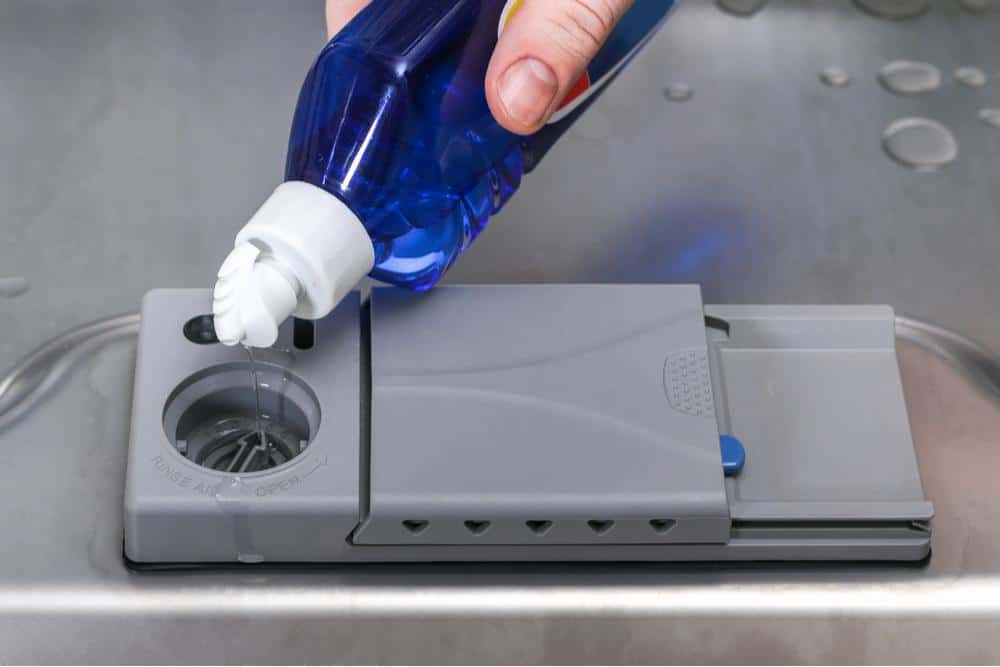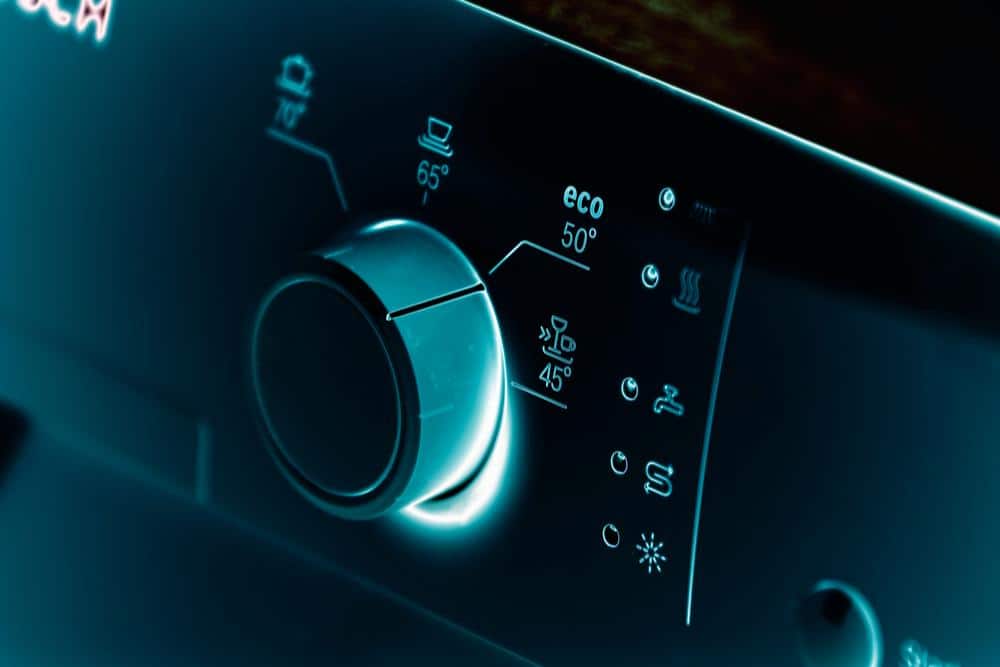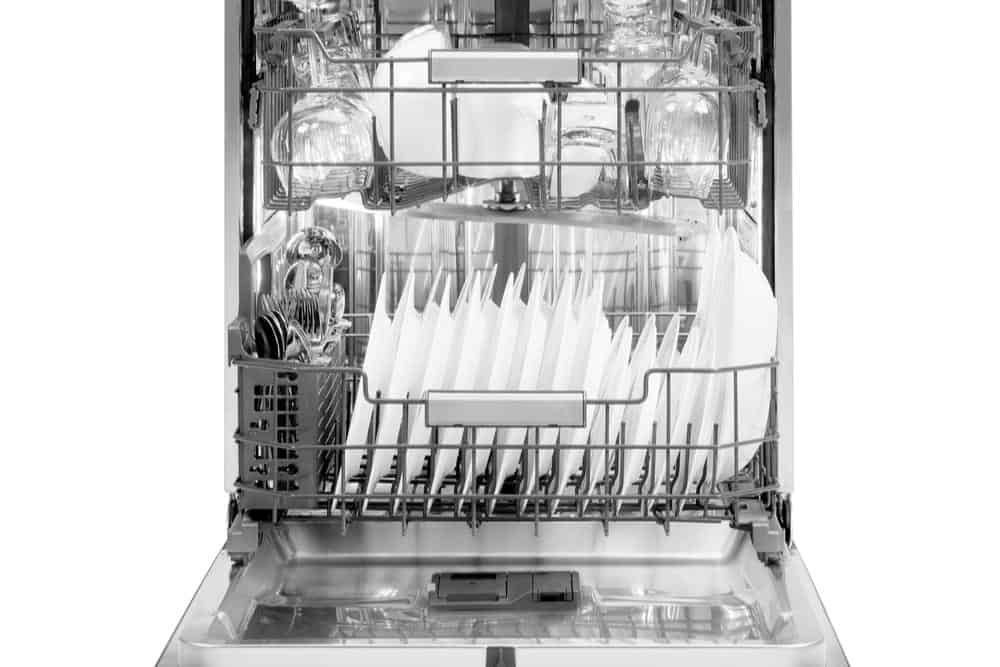Plastic gets a negative wrap. Everything we eat from, wear, and toss in the trash contains plastic particles. Plastic became a household product during the 60s and 70s and isn’t going away anytime soon.
Plastic’s popularity is due to its inexpensive cost, durability, versatility, and longevity. Many of us are trying to reduce our plastic consumption. Do you wonder if a plastic dishwasher tub is a bad thing?
Is an alternative like stainless steel interior better? What makes one product better than the other? Many people have asked that same question and chosen a plastic tub dishwasher over a stainless steel tub dishwasher. And the other way around.
Perhaps you’re asking yourself these questions because that old unit in your home has finally given up the ghost. Or you’re renovating, and everyone in your circle of friends has switched to an all stainless steel design concept.
If you’re undecided about the pros and cons of stainless steel vs. plastic tub dishwashers, we’ll guide you through the answers and solutions for this essential kitchen appliance.
Plastic tub dishwashers aren’t bad. They use hot water and high-powered spray to efficiently clean dishes. Plastic tubs are long-lasting and can withstand a ton of wear and tear. Yet people still wonder if plastic tub dishwashers perform as well as stainless housing dishwashers.
Plastic tub dishwashers are an economical alternative to their expensive stainless steel counterparts. Aside from the initial expense of purchasing a dishwasher, the questions shouldn’t center on the interior or external appearance, but on performance.
According to consumer reports, here’s what’s important when choosing a dishwasher:
A plastic tub dishwasher can satisfactorily fulfill those performance needs like alternative, more expensive dishwashers. But what components may cause one material to outperform the other? The last thing you want is an appliance with a faulty drain hose or dishes that come out spotty regardless of the dishwashing detergent.
Plastic will never rust. Water conditions may discolor the plastic interior of your dishwasher. But takes a malfunction in the heat elements to melt the interior lining. The downside to plastic tub interiors is that the plastic materials won’t allow them to get super hot.
Hard or iron-rich water may stain the interior and your dishes. So they may come out spotted regardless of the cleaning additives or wash cycle power. This issue can affect both plastic tubs and stainless interiors. Note that rinse aid can be used to prevent water spots from forming.

Rinse aid is used to prevent hard water spotting on your glasses
But, stainless steel can tolerate higher temperatures than plastic. And the interior of a dishwasher reaches high temperatures of up to 160 degrees Fahrenheit for extra germ-killing power.
The qualities of metal also retain heat which creates a quick-drying environment and makes them energy efficient.
The caveat with stainless steel is that it has the potential to rust.
The drying function of a dishwasher is directly related to the cleaning power. While a plastic dishwasher with BPA free plastic interior (a standard feature) works well, stainless steel interior dishwashers outperform plastic even with rinse aids.
Heat is the crucial element in quick spot-free drying. Which stainless steel interiors are superior at providing. That shouldn’t exclude plastic models from your purchasing decision.
In today’s economy, with rising utility costs, paying almost twice as much for a stainless steel dishwasher than a plastic dishwasher tub interior model is an investment contributing factor.

Many Dishwashers are Energy Star Certified
If the dishwasher is for your private use and the occasional watermarks on glassware don’t offend you, a plastic tub interior washer will answer your dishwashing needs.
Stainless steel dishwashers are often state of the art and come with added features like a superior quick-wash cycle that outperforms and uses less energy. But, there is a cost attached to those extra features.

Stainless Steel Dishwashers Have Some Advantages, but are Generally Less Economical Than Plastic Tub Dishwashers
Stainless dishwashers have added insulating noise factors and typically have a quieter operating noise level. The nature of stainless steel is that it is noise absorbing. And it does it better than plastic models, reducing noise decibel by 10 points more than their plastic cousins.
Technology is center stage in every household appliance on the market. Big appliance brands include unique features that allow owners to synchronize their wash cycles with innovative technology features and are Google and Alexa responsive.
Other features include extra adjustable racks for large or delicate items. Their design also maximizes space, so that load capacity is higher and results in less frequent washing demands and heated dry function.
Plastic tub dishwashers can compete in this category.
Most dishwashers fit within a standard kitchen cavity unless you own a custom-designed kitchen. Most models fit the industry-standard measurement of 24 inches wide by 35 inches high by 24 inches deep, whether stainless or plastic.
Before you install or replace an outdated model, measure to make sure. In rare cases, condominiums or apartments are fitted with kitchens that use an apartment-sized dishwasher with a slimmer profile of 18 inches wide.
Brand performance and reputation mold our personal experiences. Or we rely on feedback from sources we trust. We don’t want to invest in a brand vulnerable to constant dishwasher repair hassles or lousy performance.
Plastic interior dishwashers have withstood the test of time and continue to fill a demand in the marketplace. Price is a consideration that sets plastic tub dishwasher interiors apart from stainless steel interiors.
Interior design fashions have shifted the pendulum in favor of anything clad in stainless steel. Kitchens designed with steely appliances have a contemporary look people want to replicate in their homes.
But not all that glitters is gold. Stainless steel is prone to smudge marks and fingerprints, watermarks, and rust. Extra interior cleaning and maintenance is a consideration to prolong their lifecycle.
If budget isn’t a deciding factor, the number one option is the BOSCH 300 Series, universally the best choice. If you’ve ever spoken to a BOSCH dishwasher owner, they’ll second that endorsement. American consumers favor this brand based on washing performance, washing speed, and quiet running, available at a mid-upper price.
Maytag is the American brand we love. Maytag has superior plastic drying dishwashers, and their bottom rack design appeals to people’s preferences. It is louder.
Miele is building a solid reputation in the American appliance market. The key benefit of their products is they’re built and designed to outlast the competition. While the initial cost is higher, these German-engineered appliances last twice as long.
Whirlpool offers many plastic tub dishwashers in the budget category that get great results and consumer ratings.
GE Appliances represent American dependability. You can get an up-scale GE dishwasher to at a budget-friendly price and look and perform to a high standard.
